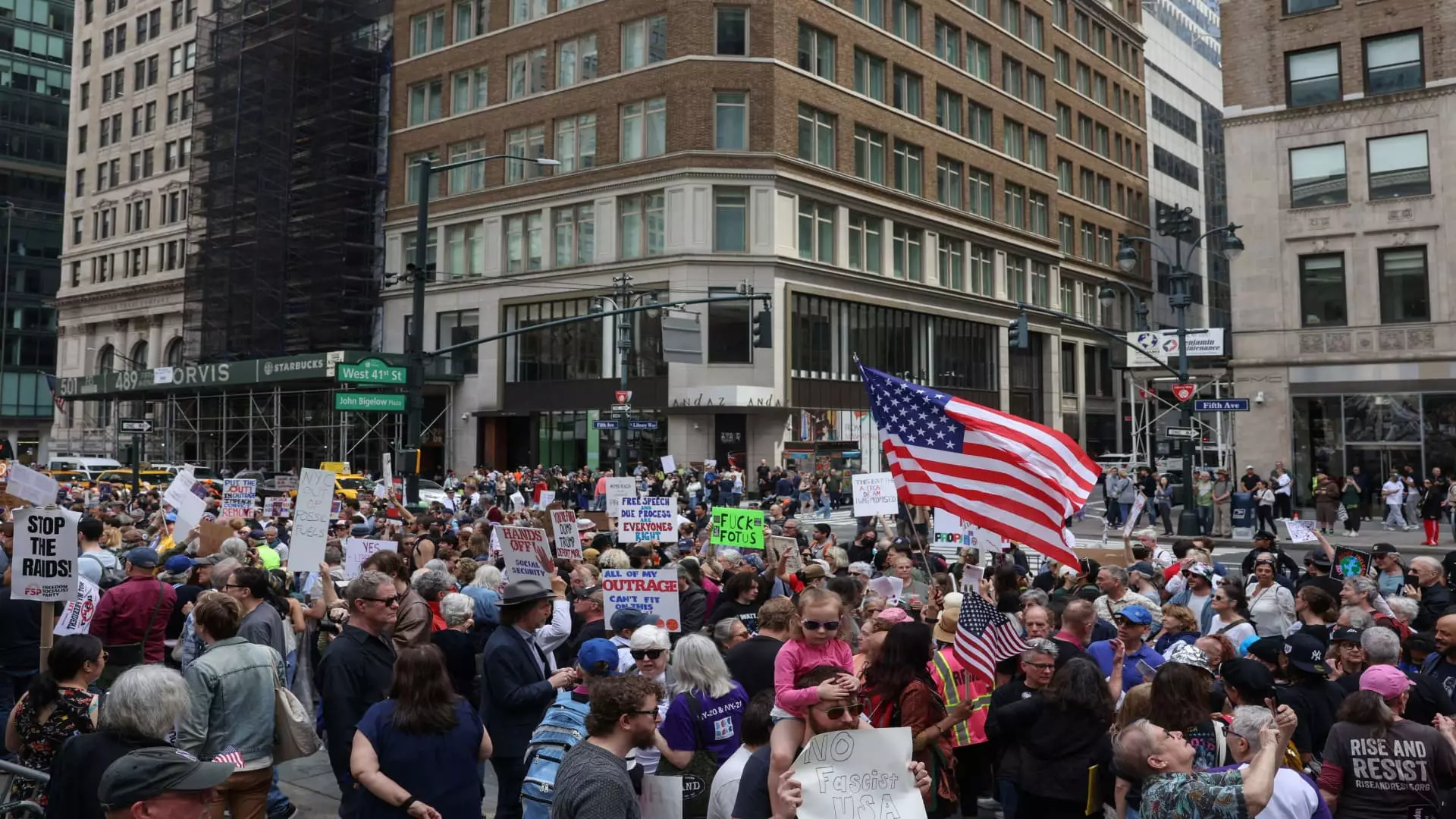In a remarkable display of civil disobedience, opponents of President Donald Trump have reinvigorated the spirit of grassroots activism, taking to the streets across diverse American landscapes to vocalize their discontent. These protests are not merely reactions to his policies; they embody a profound anxiety about the erosion of democratic values and civil liberties that many see as being under siege. In an era marked by unprecedented governmental overreach, these discontented citizens are rising up, often recalling the struggles of their forebears who fought to establish a nation predicated on freedom and democracy.
The protests on that fateful Saturday highlighted a wide spectrum of local grievances, as participants gathered in iconic locales like midtown Manhattan and Washington, D.C. The juxtaposition of a historical reenactment in Massachusetts celebrating the Battles of Lexington and Concord serves as a poignant reminder that the quest for liberty has always necessitated vigilance against tyrannical forces. Like those early Americans who faced down British oppression, the modern-day protestors embody a spirit of resistance that is both inspiring and necessary.
The Personal Motivations Behind the Protests
At the heart of these demonstrations are personal stories of fear, frustration, and an earnest desire to protect what many view as the bedrock of American values. Take, for instance, Thomas Bassford, an octogenarian who journeyed from Maine to witness the historic commemoration. His comments encapsulated a sentiment that resonates with many: “This is a very perilous time in America for liberty.” In his eyes, the responsibility of preserving freedom extends beyond mere historical appreciation; it demands active participation in the face of governmental encroachments on personal rights.
Similarly, Bob Fasick, a retired federal employee, expressed his fears regarding the Trump administration’s actions towards social safety nets and due process rights. His belief that the nation is navigating through a “dangerous period” reflects a deep yearning for justice and balance in a government that many perceive as increasingly authoritarian. This is not simply a clash of political ideologies but a visceral alarm raised by concerned citizens grappling with the potential implications of an unchecked executive branch.
A Call to Action Amidst Discontent
The widespread discontent catalyzed protests that spanned various forms of activism. From community service initiatives meant to uplift those marginalized by recent policies, to vibrant rallies designed to instill awareness and provoke discourse, the response was multifaceted. Interestingly, some protests sought to confront specific figures associated with the administration, such as billionaire Elon Musk, showcasing an intentional targeting of power dynamics that extend beyond the presidency alone.
The presence of youth at these events further emphasizes a generational desire for change, with signs proclaiming slogans that encompass the frustrations of a younger populace yearning for a more equitable society. When chants of “No fear, no hate, no ICE in our state” emerged from the steps of the New York Public Library, it was not merely a protest against immigration policies, but expressive of a broader, collective refusal to accept oppression in any form.
The Echoing Warnings of the Past
The historical allusions drawn from the American Revolutionary War serve as powerful reminders of the ongoing struggle for rights and freedoms. These modern-day activists echo the sentiments of their ancestors, demanding accountability and adherence to the principles enshrined by the Constitution and Bill of Rights. The juxtaposition of today’s protests with revolutionary history is not a coincidence; it highlights an enduring truth that the fight against tyranny is an intrinsic part of the American identity.
As citizens brandish slogans decrying “Trump’s fascist regime,” a palpable sense of urgency accompanies their words. The specter of a “police state” looms large in the collective consciousness of diverse activists—many of whom feel that constitutional safeguards are being dismantled. These demonstrations bring forth a clarion call; now, more than ever, active civic participation is paramount to safeguard the freedoms that have defined the nation since its inception.
These protests not only serve as important expressions of dissent but also represent a broader ideological movement—one that recognizes the fragility of democracy and the importance of collective action. While political landscapes may shift and evolve, the sentiment underlying these protests remains steadfast: the American people refuse to accept authoritarian governance without a fight. The stakes have never been higher, and the call to address these challenges resonates with those dedicated to preserving the democratic fabric of the nation.


Leave a Reply